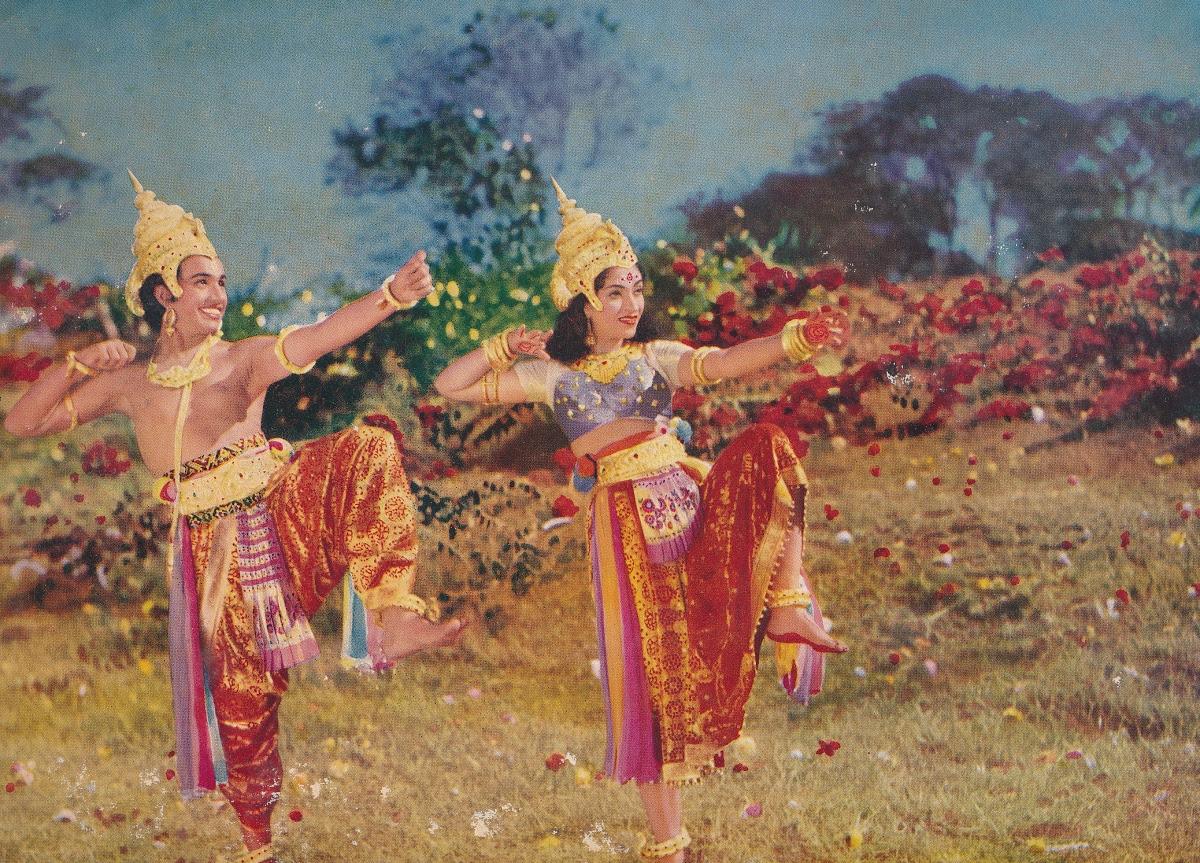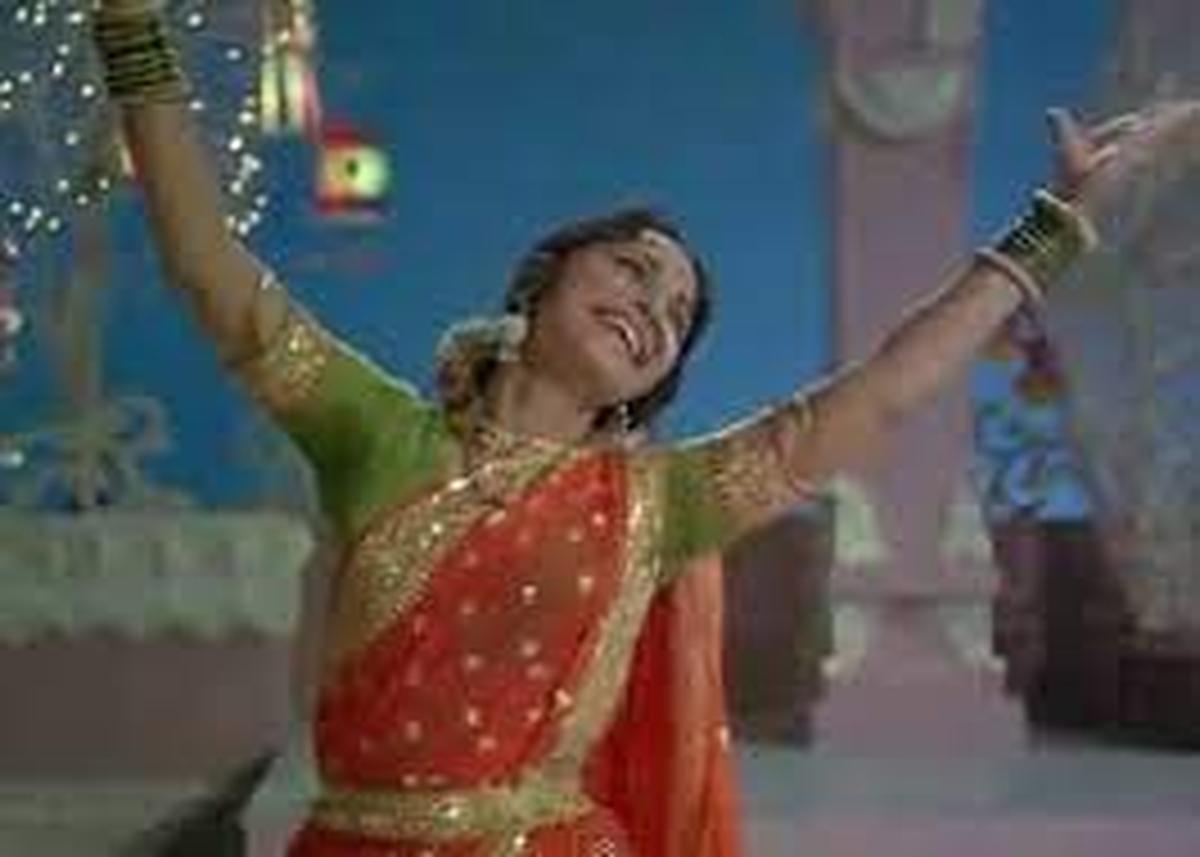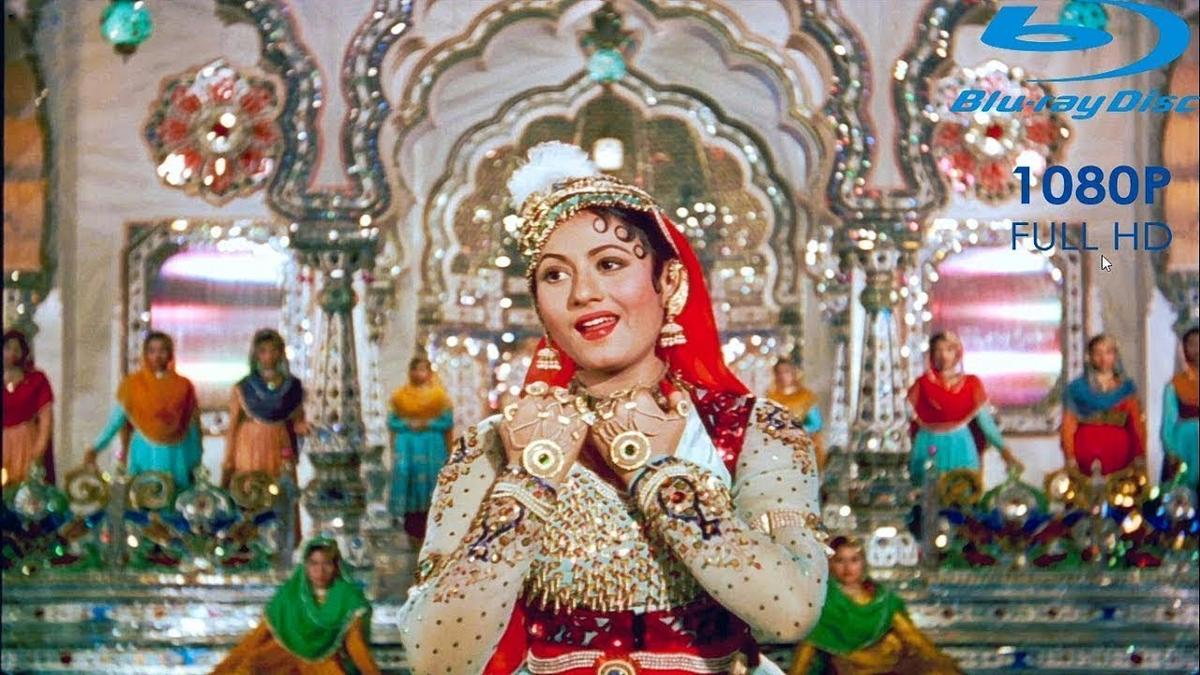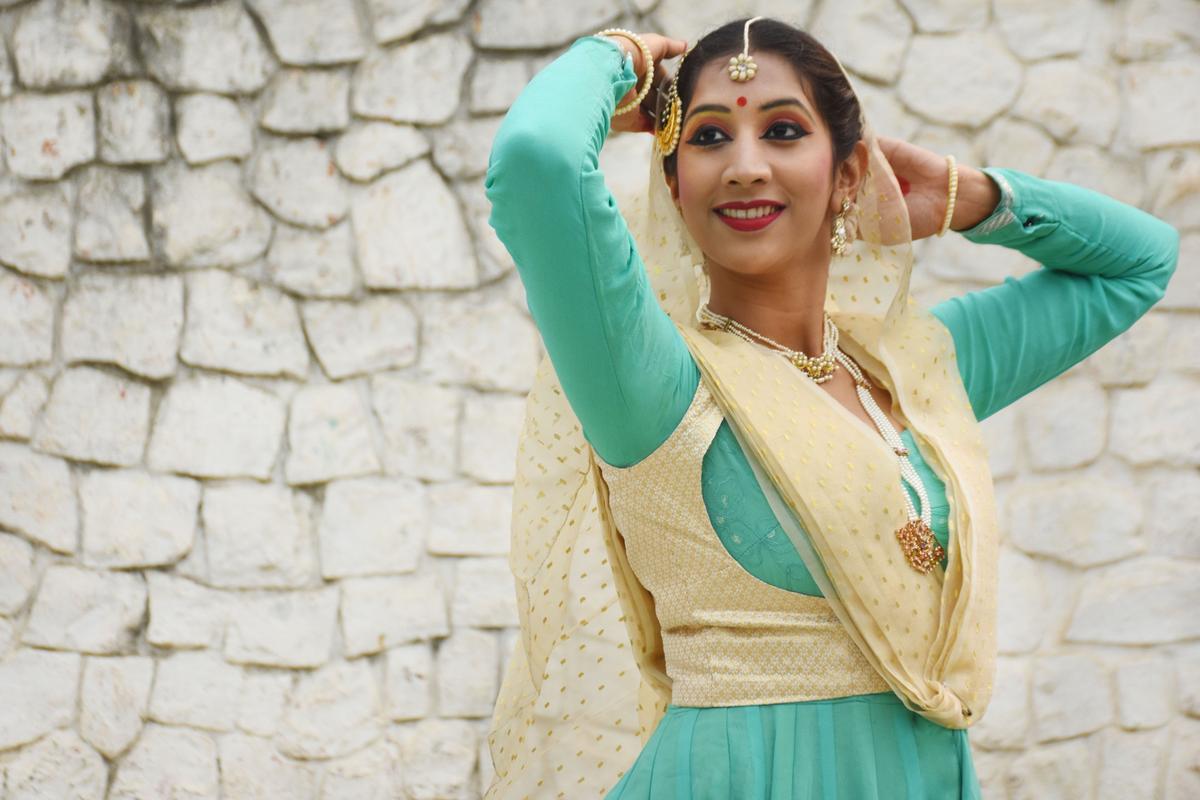
Meena Kumari in Pakeezah.
| Photo Credit: The Hindu Archives
Remember the number of times you have watched the iconic song ‘Chalte chalte’ from the Hindi film Pakeezah. Apart from, of course, the dreamy eyes of Meena Kumari, you would have noticed the two dancers in the background, dressed in pearly white Anarkalis, cutting a picture of grace and poise. The song is unimaginable without them yet they have remained unsung. Kathak dancer Siddhi Goel took it upon herself to find the identities of the two women. She looked through IMDB data, spoke to actors of the time and watched the credits of several films from the period. Her research didn’t yield confirmed answers but indicated that the two could be Meenakshi and Sujata.
Siddhi’s biggest source of information was Anjana Mumtaz, a disciple of Pt Gauri Shanker, who choreographed the song. Anjana was on the sets of Pakeezah, especially during the shooting of the song.

Celebrated dancer-choreographer Gopi Krishna with actor Sandhya in Jhanak Jhanak Payal Baaje.
| Photo Credit:
Special Arrangement
Siddhi embarked on a research journey (supported by an arts research grant from India Foundation for the Arts) to trace the presence of Kathak in Hindi cinema over a period of 100 years.
“ I have focussed not just at the dance songs in films but also at choreographers such as B. Sohanlal, B. Hiralal and Gopi Kishan. They were exponents in Kathak. Even some of the well-known actors of the time including Jeevankala, Rani, Padma Khanna, Jayshree T and Bela Bose had learnt the art form. Then there were dance assistants and background dancers, who were basically classical dancers. My research extended up to the arrival of Madhuri Dixit and creations of Sanjay Leela Bhansali. I have explored the contemporary trends too in Kathak as far as cinema is concerned,” says the Delhi-based Siddhi.

Waheeda Rahman’s training in Kathak showed in the song ‘Piya tose naina lage re’ from Guide.
| Photo Credit:
Special Arrangement
Choreographies such as ‘Piya tose naina lage re’ from Guide (1965), ‘Hothon pe aisi baat from Jewel Thief (1967), ‘Thade rahiyo o banke yaar’ and ‘Chalte Chalte’ from Pakeezah (1972) by Sohanlal, Hiralal, Pt. Lacchu Maharaj and Gauri Shanker profoundly impacted the aesthetics of dance in films. Siddhi’s research focussed on the process of creating a dance piece and how song and dance took the movie’s narrative forward?
Siddhi’s wanted to understand the reason behind why these artistes made a shift from classical to cinema. Was it because patronage for the art was on the decline? Kathak’s repertoire was also largely impacted by the tawaifs, whose lives inspired many films of the time. Dadra, thumri and kajri soon found a place in the dance. Songs such as ‘Lagat karajwa main chot’, ‘Thaade rahiyo o baanke yaar’ and ‘Mohe panghat pe nandlal’ are proof of this.

Madhubala’s graceful dancing added to her appeal in Mughal-E-Azam
| Photo Credit:
The Hindu Archives
According to Siddhi, who holds a Masters in Arts and Aesthetics from Jawaharlal Nehru University, the close interaction between classical legends and artistes of the film world resulted in classics such as Mughal-E-Azam and Pakeezah. These movies are still considered works of art. “I was keen to highlight how dancers were an integral part in the making of these films. For instance, in ‘Teere nazar dekhenge’ from Pakeezah, which was choreographed by Pt, Gauri Shanker, the entire dance sequence supports the dramatic storytelling. So my study was not just about its aesthetics but also about a method of choreography that enhanced the emotional impact of the story.”
Recalling her interaction with dancer-actor Padma Khanna, Siddhi says, “Padma ji said that while she entered cinema as a trained dancer, she credits her understanding of camera and angles to her friend and colleague Saroj Khan, who worked in films as a dancer and dance assistant before becoming a star choreographer.”

Siddhi Goel explores the the Kathak-cinema connect.
| Photo Credit:
Sheffai Reffai
Siddhi has tried to go beyond the big three magnum opuses: Mughal-e-Azam, Pakeezah and Umrao Jaan. “One of my all time favourite mujra songs is ‘Ye raat phir na aayegi’ from Mahal (1949), choreographed by Kathak guru Pt. Lacchu Maharaj. It is performed by two women. It is an underrated song, but if you look closely the dance stands out for its impeccable choreography and the way it has been shot.”
Heeramandi’s success is a testimony to Kathak’s continuing bond with celluloid. “Grace, vigour and natural expressions intrinsic to the dance form made it suitable for the popular medium. It is said that actors and directors used to visit kothas to emulate the style of the courtesans.”
In its journey from the royal courts and celluloid to the proscenium, Kathak has been deeply impacted by changing historical, social and cultural milieus.








